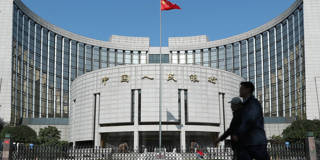While there is little doubt that the era of sustained double-digit growth is over, China is well positioned to achieve a significantly higher growth rate than most developed economies in the foreseeable future. The key to success lies in macroeconomic policy.
BEIJING – China’s economic performance has been inspiring considerable pessimism lately. In the second quarter of 2023, the Chinese economy grew by just 6.3% from a year earlier – a figure that is disappointing because of the low base in the second quarter of 2022, when pandemic restrictions were still suppressing economic activity. And in July, China’s consumer price index (CPI) entered negative territory for the first time since 2021, sparking fears of a deflationary spiral.
Whether all the pessimism is warranted ultimately depends on the answer to one crucial question: Does the recent decline of China’s GDP growth rate reflect fundamental changes to economic conditions – such as population aging, diminishing returns to scale, the deterioration of the latecomer advantage, and rising environmental costs – or can it be addressed with more effective macroeconomic policies?
In fact, while there is little doubt that the era of sustained double-digit growth is over, China is well-positioned to achieve a significantly higher growth rate than most developed economies in the foreseeable future. After all, China’s per capita GDP is still less than a quarter that of the United States.

BEIJING – China’s economic performance has been inspiring considerable pessimism lately. In the second quarter of 2023, the Chinese economy grew by just 6.3% from a year earlier – a figure that is disappointing because of the low base in the second quarter of 2022, when pandemic restrictions were still suppressing economic activity. And in July, China’s consumer price index (CPI) entered negative territory for the first time since 2021, sparking fears of a deflationary spiral.
Whether all the pessimism is warranted ultimately depends on the answer to one crucial question: Does the recent decline of China’s GDP growth rate reflect fundamental changes to economic conditions – such as population aging, diminishing returns to scale, the deterioration of the latecomer advantage, and rising environmental costs – or can it be addressed with more effective macroeconomic policies?
In fact, while there is little doubt that the era of sustained double-digit growth is over, China is well-positioned to achieve a significantly higher growth rate than most developed economies in the foreseeable future. After all, China’s per capita GDP is still less than a quarter that of the United States.